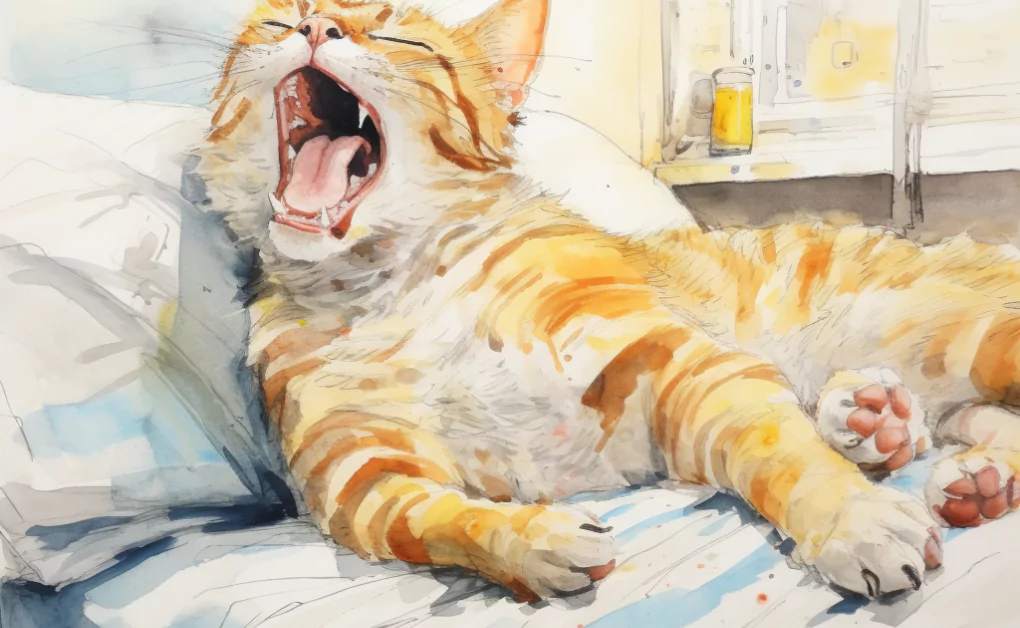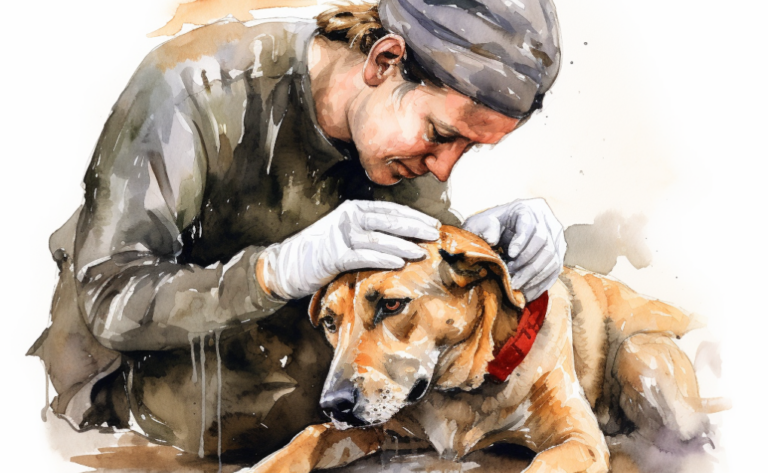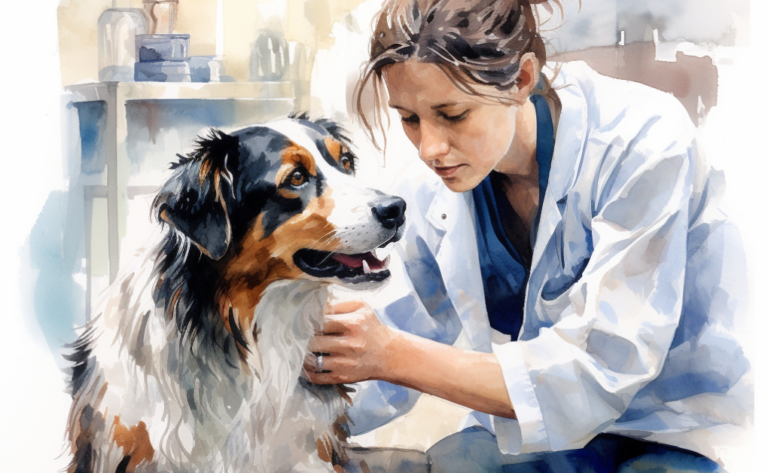What are Oral Masses in Cats?
What is it?
How is it Treated?
Breed Predispositions
There is no specific breed predisposition for oral masses in cats. Any breed or mixed breed cat can develop oral masses.
Introduction
When Whiskers, an affectionate Persian cat, started drooling excessively and struggled to eat his food, his owner, Emily, became alarmed. Concerned about Whiskers’ well-being, she quickly scheduled an appointment with their trusted veterinarian for a comprehensive oral examination. During the evaluation, the veterinarian discovered oral masses, a medical condition that can affect cats of various breeds and ages.
Oral masses in cats represent abnormal protrusions or clusters that arise within the oral cavity. These can manifest in numerous locations, such as the gums, tongue, palate, or additional oral tissues. These masses typically stem from the affected region’s overgrowth or clustering of cells. A plethora of oral mass types can be found in cats, each with differing development and incidence influenced by various factors. Including the surrounding lymph nodes, a lymph node near the mass’s region can enlarge if a malignant tumor is present.
Understanding the contributing factors and fundamental mechanisms involved in forming oral masses, such as the acanthomatous epulis, a type of benign tumor that affects the gums, is important to monitor for effective care and management.
Types of Oral Masses in Cats
Oral masses in cats can be classified as either cancerous (malignant) or non-cancerous (benign). Here is an explanation of both types:
Cancerous Oral Masses (Malignant)
- Squamous Cell Carcinoma (SCC): This is the most common type of malignant oral tumor in cats. It typically affects the gums, tongue, or back of the throat. SCC is locally invasive and can spread to other areas of the body.
- Fibrosarcoma: Fibrosarcomas are malignant tumors that arise from fibrous connective tissue. They can occur in the oral cavity, often affecting the gums or jawbones.
- Melanoma: Melanomas can develop in the oral cavity of cats. They arise from pigment-producing cells and can be aggressive, potentially spreading to other organs.
- Osteosarcoma: While less common in the oral cavity, osteosarcomas can occur in the jawbones of cats. These tumors are highly aggressive and can cause bone destruction.
Non-Cancerous Oral Masses (Benign)
- Oral Papillomas: Papillomas are benign growths caused by a viral infection. They often appear as small, cauliflower-like masses in the mouth and usually resolve independently without treatment.
- Gingival Hyperplasia: This condition involves excessive growth of gum tissue, leading to swollen or enlarged gums. While benign, it can cause discomfort and difficulty eating if left untreated.
- Epulis: Epulis is a broad term encompassing various benign growths originating from the periodontal ligament or gum tissues. They can appear as firm, raised masses and may require surgical removal if causing problems.
- Eosinophilic Granuloma Complex: This condition involves a hypersensitivity reaction, forming eosinophilic plaques or ulcers in the mouth. Although not true tumors, they can mimic masses and require appropriate management.
It’s important to note that accurate diagnosis and differentiation between cancerous and non-cancerous oral masses can only be made through a thorough evaluation by a veterinarian. They may perform a biopsy or recommend advanced imaging techniques, such as X-rays or CT scans, to determine the nature of the mass. Treatment options and prognosis will vary depending on the specific type of oral mass identified. Always consult a veterinarian for proper diagnosis and management of any oral abnormalities in your cat.
What Causes Feline Oral Masses?
There are numerous causes of oral masses in cats. These can range from benign tumours and infections to traumas and foreign bodies.
Benign Tumors
Benign tumours, often soft and painless, tend to grow slowly and rarely cause complications. Usually composed of fibrous tissue, these are made up of cells called myofibroblasts that produce collagen fibres and connective tissues. Some benign oral masses, like mandibular and neoplastic tumours, present as fluid-filled cysts, while others may contain hair follicles, glands or bone fragments.
Cystic Fibrosis
A condition found in older cats, Cystic Fibrosis, is another cause, resulting in thick mucus production and primarily affecting the upper respiratory tract. This condition is suspected to be inherited as an autosomal recessive trait.
Feline Infectious Peritonitis
Another cause of oral masses is fatal Feline Infectious Peritonitis (FIP). This disease, caused by the feline enteric coronavirus (FECV), leads to intestinal tract inflammation, resulting in fluid accumulation around the abdomen.

Malignant Oral Tumor
Malignant oral tumours in cats, often linked to oral neoplasia, are severe health concerns. Most oral tumours are malignant and can cause significant issues if they grow large or metastasize. Examples include Oral Squamous Cell Carcinoma (oral SCC), a common oral tumour in cats, caused by the human papillomavirus (HPV), and oral melanoma, cancer that typically arises from brown patches on white teeth (periapical lesions).
Oral Squamous Cell Carcinoma in Cats
Oral squamous cell carcinoma (oral SCC) is common cancer in cats. It’s usually caused by the human papillomavirus (HPV), which can be spread through contact with saliva or other body fluids from an infected cat. Cancer typically starts as small, nontransparent lesions on the roof of the mouth near the teeth. As it grows, it may invade surrounding tissues and spread to other parts of the head or neck.
Oral Melanoma
Oral malignant melanoma is a cancer of the oral cavity in cats. The most common site for this type of cancer is the mouth, but it can also occur on the tongue or floor of the mouth. Oral melanoma typically arises in cats from brown patches on white teeth (periapical lesions). Oral melanomas may be significant and highly invasive but rarely life-threatening unless spread to other body parts. Treatment generally includes surgery to remove as many tumors as possible, followed by chemotherapy and radiation therapy if necessary.
Oral and Pharyngeal Cancer in Cats
It is believed that both cancers are relatively rare in cats. Oral cancer can develop from any part of the mouth, including the mouth’s tongue, lips, gums, and roof. Pharyngeal cancer can occur from anywhere along the length of your cat’s throat (pharynx-larynx), which includes his neck, jawbone, and larynx (voice box).
Odontogenic
It is a condition in which bacteria attack the tooth roots. The infection can lead to inflammation and even tooth decay. Periodontal disease is one of the diseases linked to odontogenic tumors that cause a problem with the teeth and gums and can occur in cats. It’s most common in older cats but can also happen in younger animals. Periodontal Disease may cause tooth loss, bone loss (from inflammation around the teeth), and ulcers on the gums. Treatment includes antibiotics to clear the infection, oral surgery to fix jaw problems, and regular dental care.
Trauma
Foreign objects lodged in the mouth can lead to oral masses. Trauma can also lead to oral masses, such as foreign objects like coins, toys, bones, or sticks lodged in the mouth. One is the less common ameloblastoma, a benign tumour that can still cause significant oral discomfort and disfigurement.
What are the Signs and Symptoms of Oral Masses in Cats?
Symptoms of oral masses in a cat’s mouth can vary greatly, depending on the characteristics of the mass, including its type, location, and size. Some common indicators to look out for include:
- Visible Growths – Unusual growths or lumps may appear in your cat’s oral cavity, on areas such as gums and tongue. These growths may be raised, ulcerated, or bear a discoloration.
- Halitosis – Your cat may have persistent bad breath, which is not typical.
- Difficulty Eating or Excessive Drooling – Cats with oral tumors might struggle eating or display abnormal drooling.
- Weight Loss – This could result from difficulty in eating or as a systemic response to the underlying condition.
- Pawing at the Face – Your cat may frequently paw at its face in response to discomfort or pain.
- Changes in Behavior – Changes in your cat’s behavior, like increased aggression or withdrawal, might indicate pain or discomfort due to oral masses.
- Loose Teeth – While this can be a sign of dental disease, it can also indicate the presence of a mass affecting the tooth’s stability.
It’s essential to remember that while these signs could indicate the presence of an oral mass, they might also be linked to other oral or dental conditions. Therefore, if you notice a mass or any abnormalities, it’s crucial to get your cat evaluated by a veterinarian. A thorough examination, particularly a detailed inspection of the oral cavity, might be needed to identify the presence of oral masses and establish a suitable diagnostic and treatment plan. This is especially true since the majority of feline oral tumors require professional veterinary intervention for diagnosis and treatment.
Diagnosis of Feline Oral Masses
Physical Examination and History
Your veterinarian will meticulously examine your cat’s oral cavity during a comprehensive physical examination. This inspection will include a detailed look at the mouth, gums, tongue, and other related structures to spot any irregularities, such as growths or masses. Additionally, the veterinarian will gather information on your cat’s medical history, encompassing any symptoms you’ve noticed or any behavioral shifts.

Imaging Techniques
The vet may suggest imaging methods like dental radiographs to evaluate suspected oral masses. These images can give a detailed view of the size, location, and extent of any growth in the cat’s mouth. Radiographs also aid in assessing the integrity of the underlying structures and discovering if the mass has infiltrated the surrounding tissue.
Biopsy and Cytology
Your vet may suggest a biopsy to diagnose an oral mass accurately and understand its nature. This process involves the extraction of a small sample from the mass for microscopic evaluation.
It can be done through fine-needle aspiration (FNA), a procedure where cells are suctioned from the mass using a slim needle. In some cases, a surgical biopsy might be conducted to procure a larger tissue sample for comprehensive analysis.
Histopathology
The extracted biopsy or tissue sample will be sent to a laboratory for histopathological evaluation. Here, a veterinary pathologist will scrutinize the sample under a microscope to identify the type of cells present in the mass, determining whether it’s a benign or malignant growth. This assessment is instrumental in guiding other treatment choices.
Additional Tests
The veterinarian might recommend more tests depending on the nature of the suspected mass. These could encompass blood tests, imaging studies like a CT scan, or specific tests to screen for diseases or markers associated with particular types of oral masses, such as feline oral SCC or an odontogenic tumor.
An accurate diagnosis is paramount for devising an appropriate treatment plan. Thus, if you have a suspicion of an oral mass in your cat, consulting a veterinarian is vital. The precise diagnostic approach will hinge on the individual case and the vet’s expertise. They will work closely with you to determine the best course of action for your cat, especially as most oral tumors in cats require specific treatments at diagnosis.
Treatment of Oral Masses in Cats
Treatment for Non-cancerous Oral Masses in Cats
Surgical Excision
This is the treatment of choice for non-cancerous (benign) oral masses in cats. Complete removal or surgical excision can often be achieved if the mass is benign and hasn’t invaded deeper tissues. The surgical margin – the area of normal tissue removed along with the mass – plays a crucial role in removing the entire mass. The complexity of the surgery will depend on the location and size of the mass.
Medical Management
Some benign oral masses, like peripheral odontogenic fibroma, may regress on their own over time or with the assistance of immune system modulators.
Oral Hygiene
Regular oral hygiene can help manage certain benign oral masses, like gingival hyperplasia, which may be associated with dental disease or a reaction to certain substances like a flea collar.
Treatment for Cancerous Oral Masses in Cats
Surgical Removal
Surgical excision is often the first line of treatment for malignant oral tumors. However, the invasive nature of these tumors may require more extensive surgery, including removing portions of the jaw or palate.
Radiation Therapy
Radiation therapy may be used for malignant tumors that are difficult to remove surgically completely or to reduce the size of the tumor before surgery. It involves using high-energy radiation to kill cancer cells and may be combined with radiation and chemotherapy for advanced stages.
Chemotherapy
If oral cancer has spread to other parts of the body, chemotherapy might be employed. This systemic treatment helps to kill cancer cells throughout the body.
Palliative Care
If curative treatment is not an option, palliative care focuses on relieving symptoms and improving the quality of life for the cat. This may be due to the advanced stage of the disease or the cat’s overall health status.
Clinical Trials
Some cats with malignant oral masses may be eligible for clinical trials investigating new treatments. Veterinary teaching hospitals or specialty clinics typically run these. Clinical trials may be found for various cancers, including oral masses.
The chosen treatment strategy will depend on various factors, including the type and stage of the oral mass, the cat’s overall health, and the potential impact of treatment on the cat’s quality of life. All decisions should be made in consultation with a veterinarian or a veterinary oncologist.
Prevention of Oral Masses in Cats
Preventing oral masses in cats can be challenging, but there are some steps that pet owners can take to reduce the risk. Here are some preventive measures:
- Regular Dental Care: Maintaining good oral hygiene prevents oral masses. Brush your cat’s teeth regularly with a cat-specific toothbrush and toothpaste recommended by your veterinarian. This helps remove plaque and tartar buildup, which can contribute to developing oral masses.
- Professional Dental Cleanings: Schedule regular professional dental cleanings for your cat. These cleanings are performed under anesthesia by a veterinarian and allow for a thorough oral cavity examination, including detecting any potential masses or abnormalities.
- Monitor Oral Health: Regularly examine your cat’s mouth for any signs of abnormalities, including lumps, bumps, swelling, or sores. If you notice anything unusual, consult with your veterinarian promptly.
- Diet and Nutrition: Provide your cat with a balanced and appropriate diet to support overall health and immune function. Avoid excessive sugary or high-carbohydrate foods, which can contribute to dental issues and potential oral masses.
- Environmental Enrichment: Provide your cat with appropriate toys and activities to help prevent oral trauma. Avoid hard toys or objects that may cause injury or damage to the mouth.
- Regular Veterinary Check-ups: Schedule routine wellness visits with your veterinarian. They can perform thorough examinations, including oral assessments, and detect potential issues early on.
- Avoid Tobacco Smoke Exposure: Exposure to tobacco smoke has been linked to oral diseases in cats. Avoid smoking around your cat or exposing them to secondhand smoke.
It’s important to remember that while these preventive measures can help reduce the risk of oral masses, some factors, such as genetics and age, may increase the susceptibility of certain cats. Regular veterinary care and early detection remain critical for maintaining your cat’s oral health. Consult your veterinarian for personalized advice and guidance if you have any concerns or questions.
Frequently Asked Questions
Disclaimer: The information provided on this veterinary website is intended for general educational purposes only and should not be considered as a substitute for professional veterinary advice, diagnosis, or treatment. Always consult a licensed veterinarian for any concerns or questions regarding the health and well-being of your pet. This website does not claim to cover every possible situation or provide exhaustive knowledge on the subjects presented. The owners and contributors of this website are not responsible for any harm or loss that may result from the use or misuse of the information provided herein.







